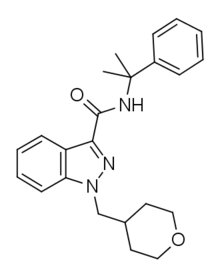
Sergeant
Sergeant, (normally abbreviated to Sgt) is a rank used in many armies, police forces, and other uniformed organizations. Its origins are in the Latin serviens, "one who serves", through the French term sergent.
In most armies the rank of sergeant corresponds to command of a squad (or section). In Commonwealth armies, it is a more senior rank, corresponding roughly to a platoon second-in-command. In the United States Army, sergeant is a more junior rank corresponding to a four-man fireteam leader.
More senior non-commissioned ranks are often variations on sergeant, for example staff sergeant, first sergeant and sergeant major.
Many countries use the rank of sergeant, whether in English or using a cognate with the same origin in another language. The equivalent rank in Arab armies is raqeeb, meaning "overseer" or "watcher".
Usage
In most non-naval military or paramilitary organizations, the various grades of sergeant are non-commissioned officers (NCOs) ranking above privates and corporals, and below warrant officers and commissioned officers. The responsibilities of a sergeant differ from army to army. There are usually several ranks of sergeant, each corresponding to greater experience and responsibility for the daily lives of the soldiers of larger units.
SGT
SGT may refer to

CUMYL-PICA
CUMYL-PICA (SGT-56) is an indole-3-carboxamide based synthetic cannabinoid. It is the α,α-dimethylbenzyl analogue of SDB-006. It was briefly sold in New Zealand during 2013 as an ingredient of at the time legal synthetic cannabis products, but the product containing CUMYL-BICA and CUMYL-PICA was denied an interim licensing approval under the Psychoactive Substances regulatory scheme, due to reports of adverse events in consumers. CUMYL-PICA acts as a potent agonist for the cannabinoid receptors, with approximately 20x selectivity for CB1, having an EC50 of 0.66nM for human CB1 receptors and 13nM for human CB2 receptors.
See also
References

CUMYL-THPINACA
CUMYL-THPINACA (also known as SGT-42) is an indazole-3-carboxamide based synthetic cannabinoid. CUMYL-THPINACA acts as a potent agonist for the cannabinoid receptors, with approximately 6x selectivity for CB1, having an EC50 of 0.1nM for human CB1 receptors and 0.59nM for human CB2 receptors.
Legal status
Sweden's public health agency suggested to classify CUMYL-THPINACA as hazardous substance on November 10, 2014.
As of October 2015 CUMYL-THPINACA is a controlled substance in China.
See also
References

5F-CUMYL-PINACA
5F-CUMYL-PINACA (also known as SGT-25 and sometimes sold as C-Liquid) is an indazole-3-carboxamide based synthetic cannabinoid. 5F-CUMYL-PINACA acts as a potent agonist for the cannabinoid receptors, with approximately 4x selectivity for CB1, having an EC50 of <0.1nM for human CB1 receptors and 0.37nM for human CB2 receptors.
Legal status
Sweden's public health agency suggested classifing 5F-CUMYL-PINACA as a hazardous substance on November 10, 2014.
See also
References

CUMYL-PINACA
CUMYL-PINACA (also known as SGT-24) is an indazole-3-carboxamide based synthetic cannabinoid. CUMYL-PINACA acts as a potent agonist for the cannabinoid receptors, with approximately 3x selectivity for CB1, having an EC50 of 0.15nM for human CB1 receptors and 0.41nM for human CB2 receptors.
Legal status
Sweden's public health agency suggested to classify CUMYL-PINACA as hazardous substance on November 10, 2014.
See also
References
Podcasts:

